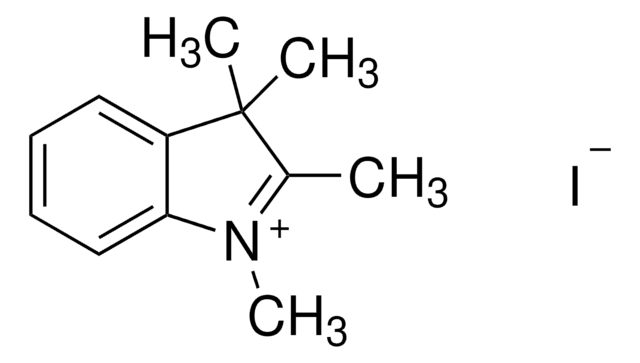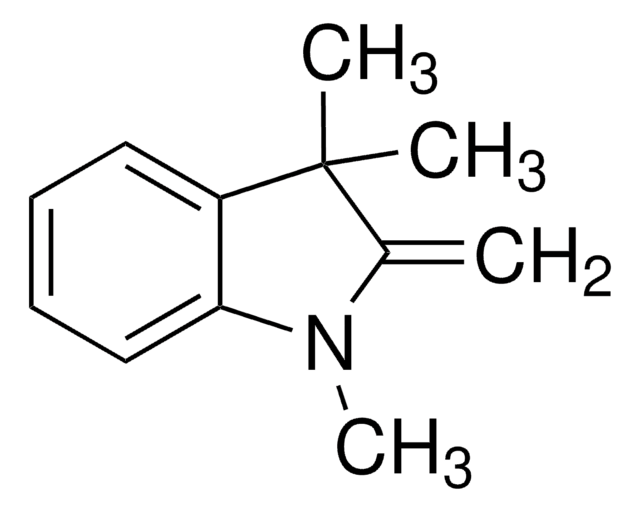T76805
2,3,3-Trimethylindolenine
98%
Synonyme(s) :
2,3,3-Trimethyl-3H-indole
About This Item
Produits recommandés
Niveau de qualité
Pureté
98%
Indice de réfraction
n20/D 1.549 (lit.)
Point d'ébullition
228-229 °C/744 mmHg (lit.)
Densité
0.992 g/mL at 25 °C (lit.)
Chaîne SMILES
CC1=Nc2ccccc2C1(C)C
InChI
1S/C11H13N/c1-8-11(2,3)9-6-4-5-7-10(9)12-8/h4-7H,1-3H3
Clé InChI
FLHJIAFUWHPJRT-UHFFFAOYSA-N
Vous recherchez des produits similaires ? Visite Guide de comparaison des produits
Description générale
Application
- Squarylium-based chromogenic anion sensors.: This research explores the synthesis and application of squarylium-based sensors, which includes 2,3,3-Trimethylindolenine as a crucial component. The study focuses on the effectiveness of these sensors in detecting various anions through chromogenic changes, highlighting the compound′s role in developing advanced chemical sensing technologies (Lee EM et al., 2012).
Mention d'avertissement
Warning
Mentions de danger
Conseils de prudence
Classification des risques
Eye Irrit. 2 - Skin Irrit. 2 - STOT SE 3
Organes cibles
Respiratory system
Code de la classe de stockage
10 - Combustible liquids
Classe de danger pour l'eau (WGK)
WGK 1
Point d'éclair (°F)
199.4 °F - closed cup
Point d'éclair (°C)
93 °C - closed cup
Équipement de protection individuelle
Eyeshields, Gloves, type ABEK (EN14387) respirator filter
Faites votre choix parmi les versions les plus récentes :
Déjà en possession de ce produit ?
Retrouvez la documentation relative aux produits que vous avez récemment achetés dans la Bibliothèque de documents.
Les clients ont également consulté
Notre équipe de scientifiques dispose d'une expérience dans tous les secteurs de la recherche, notamment en sciences de la vie, science des matériaux, synthèse chimique, chromatographie, analyse et dans de nombreux autres domaines..
Contacter notre Service technique

![1,1,2-Trimethylbenz[e]indole ≥98.0% (HPLC)](/deepweb/assets/sigmaaldrich/product/structures/296/735/4c0b92e3-1a5f-4c32-8b5b-0b0997c15df4/640/4c0b92e3-1a5f-4c32-8b5b-0b0997c15df4.png)

![1′,3′-Dihydro-1′,3′,3′-trimethyl-6-nitrospiro[2H-1-benzopyran-2,2′-(2H)-indole] 98%](/deepweb/assets/sigmaaldrich/product/structures/503/745/147ecd2c-44b9-46e9-a8c9-bff9a2577218/640/147ecd2c-44b9-46e9-a8c9-bff9a2577218.png)



![N-[5-(Phenylamino)-2,4-pentadienylidene]aniline monohydrochloride 98%](/deepweb/assets/sigmaaldrich/product/structures/365/246/6dec3589-6c56-4b0a-a3ae-e8d5fbbd3f05/640/6dec3589-6c56-4b0a-a3ae-e8d5fbbd3f05.png)



